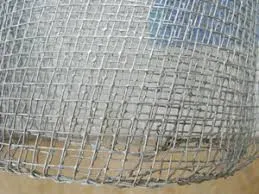-
+86 15030157877
-
sales@galvanizedmetalmesh.com
Th11 . 16, 2024 10:40 Back to list
concrete reinforcement wire mesh
Understanding Concrete Reinforcement Wire Mesh Benefits and Applications
Concrete has long been a favored material in construction, known for its strength and durability. However, when it comes to enhancing these properties, the use of reinforcement materials becomes essential. One of the most effective reinforcement solutions is concrete reinforcement wire mesh. This article explores the benefits, types, and common applications of wire mesh in concrete structures.
What is Concrete Reinforcement Wire Mesh?
Concrete reinforcement wire mesh is a grid-like structure made from steel wires. The wires are usually welded together at specified intervals to form a series of squares or rectangles. This mesh is embedded within concrete to improve its tensile strength, helping to prevent cracking and enhance structural integrity. The mesh comes in various sizes and thicknesses, allowing for versatility in different construction projects.
Benefits of Using Wire Mesh
1. Enhanced Strength and Durability One of the primary benefits of using concrete reinforcement wire mesh is its ability to significantly increase the strength and durability of concrete structures. The mesh provides essential support, particularly in tension areas, thereby preventing cracks and extending the lifespan of the concrete.
2. Cost-Effectiveness Wire mesh is a cost-effective solution for reinforcing concrete. It requires less material compared to other reinforcement options, such as rebar, while still providing excellent strength. This reduction in material can lead to savings on both material costs and labor during installation.
3. Easy Installation The installation process for wire mesh is relatively straightforward. It can be easily cut and bent to fit specific shapes and sizes, allowing for a seamless integration into various concrete pours. This ease of use can help reduce labor time and associated costs, making it a preferred choice among contractors.
4. Versatile Applications Concrete reinforcement wire mesh is suitable for a wide range of applications. From residential driveways and sidewalks to commercial floors and industrial pavements, the mesh can be employed in virtually any concrete project. Its adaptability makes it a valuable asset in the construction industry.
concrete reinforcement wire mesh

5. Reduced Cracking Potential When concrete dries, it tends to shrink, which can lead to cracking. Reinforcement wire mesh helps mitigate this issue by distributing stresses evenly throughout the concrete mass. This feature is particularly important in large slabs and pavements, where the risk of cracking is higher.
Types of Concrete Reinforcement Wire Mesh
There are various types of wire mesh available, each designed to meet specific needs
1. Welded Wire Mesh This type consists of wires that are welded together at intersections, forming a robust grid. It is commonly used in slabs, walls, and other structural applications.
2. Galvanized Wire Mesh Coated with a layer of zinc, galvanized wire mesh offers superior corrosion resistance. This makes it ideal for applications where exposure to moisture and harsh environments is anticipated.
3. Plastic-Coated Wire Mesh To provide additional protection against corrosion, plastic-coated wire mesh is another option. The plastic coating enhances durability and is often used in outdoor applications.
Conclusion
Concrete reinforcement wire mesh plays a pivotal role in modern construction, offering a range of benefits that enhance the performance of concrete structures. With its combination of strength, cost-effectiveness, and ease of installation, wire mesh continues to be a popular choice among builders and contractors. As construction practices evolve and technology advances, the application of wire mesh will likely expand, contributing to safer and more durable structures for years to come. Whether in residential or commercial projects, its impact on the longevity and stability of concrete cannot be overstated.
-
Hexagonal Gabion Mesh: Durable Stone Cages for Landscaping
NewsJul.22,2025
-
Premium Black Brick Welded Mesh - High Strength & Corrosion Resistant
NewsJul.21,2025
-
AI SEO Optimizer
NewsJul.20,2025
-
High-Quality Chicken Wire Panels Leading Manufacturer & Exporter
NewsJul.08,2025
-
High-Quality Concrete Reinforcement Wire Mesh – Reliable Steel Mesh Manufacturers & Exporters
NewsJul.08,2025
-
High-Quality Aluminum Expanded Mesh Leading Manufacturers & Exporters
NewsJul.08,2025



